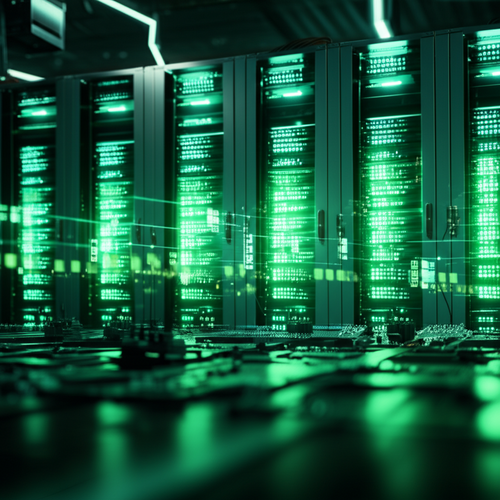The Future of Crypto Mining: Efficiency, Sustainability, & Innovation
The landscape of cryptocurrency mining is in a constant state of evolution, driven by technological advancements, environmental considerations, and shifting market dynamics. What began as a decentralized effort on standard computer processors has transformed into a sophisticated, multi-billion-dollar industry. Today, the focus is squarely on maximizing efficiency, integrating sustainable practices, and fostering innovation to meet the demands of an ever-growing digital economy. Understanding these trends is crucial for anyone involved in or interested in the world of blockchain and decentralized finance.
The Evolution of Crypto Mining Hardware
The journey of crypto mining hardware is a testament to the relentless pursuit of processing power and efficiency. Early miners utilized readily available CPUs, but as the difficulty of mining increased, GPUs quickly took over due to their superior parallel processing capabilities. This initial phase laid the groundwork for a specialized industry that would soon emerge.
From CPUs to ASICs: A Leap in Efficiency
The real game-changer arrived with Application-Specific Integrated Circuits (ASICs). Unlike general-purpose CPUs or GPUs, ASICs are designed exclusively to perform one task: mining a specific cryptocurrency algorithm. This specialization allowed for an unprecedented leap in hash rate per watt, dramatically increasing mining efficiency and making earlier hardware largely obsolete for competitive mining. Today, ASICs dominate the mining of Proof-of-Work cryptocurrencies like Bitcoin, delivering unparalleled performance.
Specialized Hardware: The Role of IceRiver and OneMiners
In this high-stakes environment, companies like OneMiners and IceRiver Europe stand at the forefront, developing cutting-edge ASIC miners that push the boundaries of performance and power efficiency. These manufacturers continuously innovate to provide miners with powerful tools designed to optimize their operations. The competitive landscape among hardware providers drives significant advancements, focusing on factors such as chip design, cooling solutions, and overall system reliability. These specialized devices are essential for individuals and large-scale mining operations looking to maintain profitability and contribute to the network’s security.
Addressing Energy Consumption and Sustainability
One of the most significant challenges facing the cryptocurrency mining industry is its energy consumption. As the industry scales, so does its environmental footprint, leading to increased scrutiny and calls for more sustainable practices.
The Environmental Footprint of Mining
The energy-intensive nature of Proof-of-Work mining, particularly for Bitcoin, has been a major point of contention. Critics often highlight the substantial electricity demand, drawing comparisons to the energy usage of small countries. This consumption raises concerns about carbon emissions, especially when mining operations rely heavily on fossil fuels. Addressing these environmental impacts is no longer optional; it’s a critical component of the industry’s future viability and public acceptance.
Innovations in Sustainable Mining Practices
The industry is responding with a concerted push towards sustainability. Many mining operations are actively relocating to regions with abundant renewable energy sources, such as hydroelectric, geothermal, solar, and wind power. This strategic move significantly reduces their carbon footprint and aligns with global environmental goals. Beyond renewable energy, innovations include utilizing waste heat generated by miners for various applications, such as heating greenhouses or residential buildings. Furthermore, advancements in hardware efficiency, exemplified by the latest offerings from companies like OneMiners, continue to reduce the energy required per hash, making each mining operation more environmentally friendly.
Regulatory Landscapes and Geopolitical Impacts
The global nature of cryptocurrency mining means it is inherently intertwined with international politics, energy policies, and regulatory frameworks. These external factors can significantly impact the operational feasibility and profitability of mining enterprises.
Navigating Global Regulations
Governments worldwide are grappling with how to regulate cryptocurrency and mining activities. Approaches vary widely, from outright bans in some regions to supportive policies that encourage innovation and investment in others. These regulatory shifts can prompt mass migrations of mining operations, influencing the global distribution of hash power. Uncertainty around future regulations continues to be a key consideration for long-term strategic planning in the crypto mining sector, shaping where new facilities are built and how existing ones operate.
Supply Chain Resilience and Global Shifts
Geopolitical events, trade policies, and global supply chain disruptions can have profound effects on the availability and cost of mining hardware. Manufacturing concentrated in specific regions makes the industry vulnerable to bottlenecks and tariffs. The pursuit of greater supply chain resilience and diversification is therefore a growing priority. As reported by sources such as Al Jazeera, global economic shifts and energy crises often highlight the interconnectedness of technological industries with geopolitical stability, underscoring the need for adaptive strategies within the mining community.
The Road Ahead: Decentralization and Emerging Trends
While Bitcoin’s Proof-of-Work remains dominant, the broader blockchain ecosystem is exploring alternative consensus mechanisms and new applications that will shape the future of mining.
Proof-of-Stake vs. Proof-of-Work
The shift of major cryptocurrencies like Ethereum from Proof-of-Work (PoW) to Proof-of-Stake (PoS) has sparked considerable debate. PoS relies on validators staking their cryptocurrency rather than solving complex cryptographic puzzles, significantly reducing energy consumption. While PoW continues to underpin Bitcoin’s security, the emergence of PoS highlights a diversification in how decentralized networks maintain consensus. This evolution doesn’t necessarily spell the end for PoW mining but encourages efficiency and a focus on blockchains that will continue to utilize it.
Beyond Bitcoin: Mining Altcoins and New Blockchains
The world of crypto mining extends far beyond Bitcoin. Many other cryptocurrencies still rely on Proof-of-Work and can be mined using specialized ASICs or GPUs. As new blockchain projects emerge, they often present unique mining opportunities for those willing to adapt their hardware and strategy. The ability to identify promising altcoins and allocate mining resources effectively will remain a critical skill for miners in a diversified crypto ecosystem. Community insights, often found on platforms like Reddit, such as discussions within the EU_IceRiver subreddit, provide valuable real-time information on emerging trends and hardware performance.
Practical Advice for Aspiring Miners
For those considering entering the world of cryptocurrency mining, careful planning and continuous learning are essential. Start by thoroughly researching the specific cryptocurrency you intend to mine, its algorithm, and the most suitable hardware. Calculate potential profitability by factoring in electricity costs, hardware investment, and pool fees. It’s also wise to stay updated on regulatory changes and technological advancements, as the landscape can shift rapidly. Joining online communities and forums can provide invaluable insights and support from experienced miners.
The future of crypto mining is poised for continuous innovation, with a strong emphasis on integrating sustainable energy solutions and navigating complex regulatory environments. As hardware becomes more efficient and the industry matures, its capacity to contribute positively to the global digital economy will only grow. Staying informed and adaptable will be key to thriving in this dynamic field.



